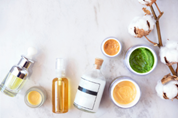
Latest trends form Cosmetic Industry Forum
On Thursday, November 19th, the 8th edition of Cosmetic Industry Forum took place, discussing the key trends and challenges brought by the past year, the covid, and following lockdown crisis. Here are the key implications to carry out:
Rise of consumers’ patriotism
As by the example of Poland, the research reveal customers getting even more into products offered by local brands. Nine out of ten people in Poland claim a product’s Polish origin to be an important factor forming the purchase decision. Two main reasons for that are growing quality of local products and a will to support domestic businesses. In addition, the importance of price in this case decreases. As it was with food, where Polish products have been traditionally preferred against imported ones, this year we’re seeing the same trend coming to the cosmetic sector.
Thus, the easier it is for the customer to recognize where the products come from, the faster gets the purchase, so thinking of homogenous graphic elements revealing the place where the product was produced is definitely a thing now for local brands.
 Mascara effect
Mascara effect
There’s been a lot people guessing whether the market was going to face the so-called “lipstick effect”. The theory says, in the day of crisis sales of such products as lipsticks, that appear in such case sort of luxury, tends to go up. The decrease in general makeup segment, though, proves opposite. Yet, mascaras, makeup foundations and correctors keep selling good. Instead of lipstick, we come to see a mascara effect. Clients simply keep looking at beauty products applied on face areas not covered by masks, and, by the way, nails as well.
The lockdown forced a major stake of makeup products sales to go online. And here comes another shift in trends, as makeup brands never tended to assume Internet as a potential sales workhorse.
 New products still wanted
New products still wanted
The lockdown and general crisis erased cosmetics form the moist shopping lists, and it might seem, that looking for further product innovations makes no sense. Customers’ interest in new products is tightly correlated with how they feel about their financial condition. Apparently, the key factor here is uncertainty, and not just bad feeling about the future. Customers, that simply expect their finance to go down show higher interest in products, than those feeling uncertain.
Actually, there’s still a number of segments, like hair care, where customers show almost no decrease in demand for news. The best way brands can stay afloat is about adapting the range and products to the challenges and trends brought by the lockdowns, and supplying the customers with better relaxing, stress relieving products as well as good old DIY supplies, like home hair dyes.
E-commerce to save the industry
The lockdown forced brands to do the best to adapt in the new circumstances and migrate their major activities to the Internet. Covid actually made even the most stubborn corporate chairmen open their minds towards digital market. Thought, opportunities here come along with new challenges, as here each client has all the world’s knowledge lies at his hands, so building trustful relations with the customers requires far more clarity, transparency and reliability from the brand.

